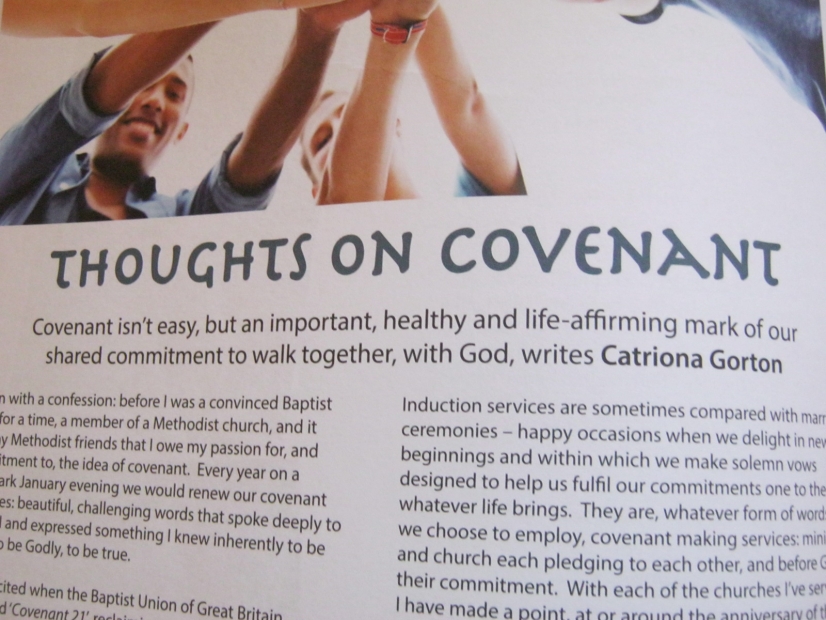It's been a bit quiet in this corner of blogland - I've been otherwise occupied and not really had a lot I felt was appropriate to share. Sometimes there are things going on that we prefer to keep private, and then realise that the public nature of our role makes that a tad tricky. Sometimes, for all the right (or best intended) reasons we make a call and then discover that it is misunderstood. This public/private interface is a tricky one to get right.
What follows is more public than I had hoped, but reflects the reality that people are incredibly good at putting two and two together and making a huge number if you are too guarded in what you share! Perhaps, because there is a risk a few hearts are already pounding and fearing the worst, I need to begin by saying that there is nothing nasty, sinister or worrying going on. However, jungle drums, grapevines and other leaks mean that partial stories have already arisen and rumours need to be scotched, best I can. There is also a sense that this blog post is "hiding in plain sight" ... hopefully what that means will become clear.
I know a number of readers of this blog also check out the Gathering Place website, read our magazine online or listen to our service podcasts. This means that you may already have spotted that there has been a change to our preaching plan and that I am not leading worship for several weeks. It is this, already public, information (and rightly so) that promted me to post - what is going on and why?
The short story:
On Friday of this week, provided my blood pressure behaves (prayers and vibes for this very welcome) I will behaving fairly major gynaecological surgery to address some long term side effects of my cancer treatment that have failed to repsond to several less invasive procedures over the last four years. This will mean several weeks off to convalesce and then I will return to work "a whole new woman". Please be reassured that this is not new or recurrent cancer - all the tests undertaken prior to making this decision have been clear.
For the next few weeks preaching at the Gathering Place will be in the very capable hands of some long term friends of ours, a ministerial couple M & L, and I look forward to listening to their services online.
I won't be posting lots of updates on my progress as there will be next to nothing to tell - but I will be around and will be back online a week or so post-op. I know that some readers know my family in real life, so this a plea from the heart (and a huge risk in sticking this online where anyone can see it)... I have not told my elderly mother about this surgery as she had major health issues and a level of confusion which mean that such knowledge could be damaging to her wellbeing... in fact, the only family members I have told so far are my sister and an aunt. So if you do know my folks, or if you know folks who know my folks, please be careful.
The long story (for those who are interested in Tamoxifen and its rare side effects)
Tamoxifen is a wonderful drug, and so far has kept me free of breast cancer for almost five years, with a plan to continue to with it for a further five. For a 'high risk' patient this is important and, in my view, the benefits outweigh the dififculties.
Any drug comes with a side effects list, and most people don't experience any of them. I am just in that tiny weeny minority who work their way down the list for Tamoxifen, missing any that would make it unsafe and 'selecting' those that are a flipping nuisance. So I've learned to live with chronic joint pain, hot flushes and the "very large floaters" and "disco eyeball" (as another similarly affected friend puts it) left by posterior vitreous detachment. And then there are the gynaecological effects... as many readers are male and as it's not very edifying to describe in detail, we'll go with the technical bare facts! I have had repeated episodes of what is technically termed post-menopausal blessing bleeding (PMB) due to Tamoxifen induced endometrial hyperplasia. Three times this has been treated by hysteroscopy and polypectomy (each time biopsy confirmed this as benign) on the third occasion having a progesterone releasing prothesis implanted (with the approval of my breast team) in an attempt to prevent recurrence. Alas this didn't work out for me, in fact it made things worse, and in December I was advised that the only remaining option is a total abdominal hysterectomy (TAH) and, due to my inherently increased risk of gynaecological cancers, bilateral salpingo-oopherectomy (BSO). I have to confess I love a word with three 'o' together in the middle, it lends a suitable air of nonsense to the whole enterprise!
I cannot stress strongly enough that this is a rare effect of Tamoxifen. I also cannot stress strongly enough my view that taking Tamoxifen is worth the risk of such effects. My clincher for my decision to have surgery was the realisation that living with bleeding, anaemia and lethargy for another five years is just not viable. Hopefully in a few weeks I really will be "a whole new woman".
So there you have it... please don't be concerned, this is standard surgery that loads of women have every day and are glad they do. Again, this is hidden in plain sight, so it you do know any of my folks, please don't start talking about it. And if you "do' prayers then please pray for M & L as they prepare to lead our services, for skills for the doctors... and, selfishly, that my BP behaves!!
